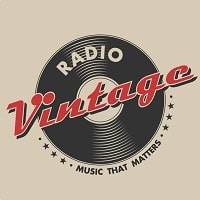Rockabilly is a vibrant and energetic subgenre of rock 'n' roll that emerged in the early 1950s, primarily in the Southern United States. It is characterized by its distinctive blend of country music and rhythm and blues, creating a sound that is both raw and infectious. The term "rockabilly" itself is a portmanteau of "rock 'n' roll" and "hillbilly," reflecting the genre's roots in both urban and rural musical traditions.
The foundational elements of rockabilly include a strong backbeat, often played on the snare drum, which gives the music its characteristic bounce. This rhythmic drive is complemented by twangy electric guitar riffs and vocal styles that range from smooth and melodic to wild and energetic. The lyrics often revolve around themes of love, heartbreak, and rebellion, capturing the spirit of youth culture in post-World War II America.
One of the most iconic figures associated with rockabilly is Elvis Presley, whose early recordings exemplify the genre's fusion of country and R&B influences. Songs like "That's All Right" and "Good Rockin' Tonight" showcased his dynamic vocals and charismatic stage presence, making him a pioneer in popularizing rockabilly to a wider audience.
Other notable artists who contributed significantly to the development of rockabilly include Carl Perkins, whose song "Blue Suede Shoes" became a massive hit and is considered one of the genre's classic tracks. Johnny Cash, Buddy Holly, and Jerry Lee Lewis also made significant contributions with their unique styles and innovative approaches to music.
The instrumentation in rockabilly typically features an upright bass or stand-up bass for a deep, resonant sound, along with drums that provide the essential backbeat. The electric guitar is often played with a slide or picked aggressively to create a distinctive twang. Vocals are usually delivered with enthusiasm and energy, sometimes incorporating yodeling or other vocal effects.
Rockabilly fashion is equally iconic, featuring elements like pompadour hairstyles for men, leather jackets, and tight-fitting pants. Women often wore poodle skirts, petticoats, and saddle shoes, reflecting the style of the 1950s. This visual aesthetic was as much a part of the rockabilly culture as the music itself.
The genre experienced a resurgence in popularity during the late 1970s and early 1980s with the emergence of psychobilly, which blended rockabilly with elements of punk rock. Bands like The Cramps and The Stray Cats brought a new energy to the style, attracting younger audiences and keeping the spirit of rockabilly alive.
Today, rockabilly continues to thrive in various forms, from traditionalists who stick closely to the original sound to modern artists who incorporate contemporary influences. Festivals and events dedicated to rockabilly music and culture are held worldwide, celebrating the genre's enduring appeal and influence on popular music. Whether through its lively rhythms, catchy melodies, or distinctive fashion, rockabilly remains a beloved and timeless expression of American musical heritage.


 1k
1k
 1
1

